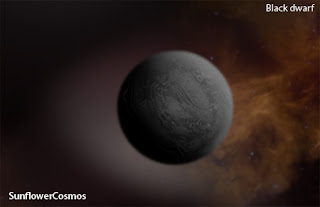The Big bang theory and life cycle of stellar universe, as interpreted in Rig Veda - it talks how all of a sudden the universe formed and eventually how it ends after everything every matter is vaporised in to a vast sea of photons.
The formation of Star,galaxies ( milky way, andromeda etc ) Sun and its planet, evolution of life on earth and its extinction, Stars life cycle and its phases such as white dwarf, red dwarf, black dwarf, pulsars, super novae and black holes.
Nasadiya Sukta (after the incipit ná ásat "not the non-existent") is the 129th hymn of the 10th Mandala of the Rigveda. It is concerned with cosmology and the origin of the universe.The hymn is made with so much of creative mode of thinking and is logical to understand it.
Interpretations
The hymn has attracted a large body of literature of commentaries both in Indian theology and in Western philology.
It begins by paradoxically stating "not the non-existent existed, nor did the existent exist then" (ná ásat āsīt ná u sát āsīt tadânīm), paralleled in verse 2 by "then not death existed, nor the immortal" (ná mṛtyúḥ āsīt amŕtam ná tárhi). But already in verse 2 mention is made that there was "breathing without breath, of its own nature, that one" ânīt avātám svadháyā tát ékam). In verse 3, being unfolds, "from great heat (tapas) was born that one" (tápasaḥ tát mahinâ ajāyata ékam). Verse 4 mentions desire (kāma) as the primal seed, and the first poet-seers (kavayas) who "found the bond of being within non-being with their heart's thought".
Brereton (1999) argues that the reference to the sages searching for being in their spirit is central, and that the hymn's gradual procession from non-being to being in fact re-enacts creation within the listener (see sphoṭa), equating poetic utterance and creation (see śabda).
नासदासींनॊसदासीत्तदानीं नासीद्रजॊ नॊ व्यॊमापरॊ यत् ।
किमावरीव: कुहकस्यशर्मन्नभ: किमासीद्गहनं गभीरम् ॥१॥
न मृत्युरासीदमृतं न तर्हि न रात्र्या।आन्ह।आसीत् प्रकॆत: ।
आनीदवातं स्वधया तदॆकं तस्माद्धान्यन्नपर: किंचनास ॥२॥
तम।आअसीत्तमसा गूह्ळमग्रॆ प्रकॆतं सलिलं सर्वमा।इदम् ।
तुच्छॆनाभ्वपिहितं यदासीत्तपसस्तन्महिना जायतैकम् ॥३॥
कामस्तदग्रॆ समवर्तताधि मनसॊ रॆत: प्रथमं यदासीत् ।
सतॊबन्धुमसति निरविन्दन्हृदि प्रतीष्या कवयॊ मनीषा ॥४॥
तिरश्चीनॊ विततॊ रश्मीरॆषामध: स्विदासी ३ दुपरिस्विदासीत् ।
रॆतॊधा।आसन्महिमान् ।आसन्त्स्वधा ।आवस्तात् प्रयति: परस्तात् ॥५॥
कॊ ।आद्धा वॆद क।इह प्रवॊचत् कुत ।आअजाता कुत ।इयं विसृष्टि: ।
अर्वाग्दॆवा ।आस्य विसर्जनॆनाथाकॊ वॆद यत ।आबभूव ॥६॥
इयं विसृष्टिर्यत ।आबभूव यदि वा दधॆ यदि वा न ।
यॊ ।आस्याध्यक्ष: परमॆ व्यॊमन्त्सॊ आंग वॆद यदि वा न वॆद ॥७॥
न मृत्युरासीदमृतं न तर्हि न रात्र्या।आन्ह।आसीत् प्रकॆत: ।
आनीदवातं स्वधया तदॆकं तस्माद्धान्यन्नपर: किंचनास ॥२॥
तम।आअसीत्तमसा गूह्ळमग्रॆ प्रकॆतं सलिलं सर्वमा।इदम् ।
तुच्छॆनाभ्वपिहितं यदासीत्तपसस्तन्महिना जायतैकम् ॥३॥
कामस्तदग्रॆ समवर्तताधि मनसॊ रॆत: प्रथमं यदासीत् ।
सतॊबन्धुमसति निरविन्दन्हृदि प्रतीष्या कवयॊ मनीषा ॥४॥
तिरश्चीनॊ विततॊ रश्मीरॆषामध: स्विदासी ३ दुपरिस्विदासीत् ।
रॆतॊधा।आसन्महिमान् ।आसन्त्स्वधा ।आवस्तात् प्रयति: परस्तात् ॥५॥
कॊ ।आद्धा वॆद क।इह प्रवॊचत् कुत ।आअजाता कुत ।इयं विसृष्टि: ।
अर्वाग्दॆवा ।आस्य विसर्जनॆनाथाकॊ वॆद यत ।आबभूव ॥६॥
इयं विसृष्टिर्यत ।आबभूव यदि वा दधॆ यदि वा न ।
यॊ ।आस्याध्यक्ष: परमॆ व्यॊमन्त्सॊ आंग वॆद यदि वा न वॆद ॥७॥
Rig Veda 10.130
The hymn that immediately follows (10.130) deals with the origin of sacrifice and similarly refers to a creator figure, puṃs "the Man", identified with Prajāpati by Sāyana.
The hymn contemplates the first sacrifice performed by human worshippers who by the act were elevated to rishis, alluding to the mythical first sacrifice performed by the gods described in the Purusha Sukta (RV 10.90) Verse 6 (trans. Griffith):
- So by this knowledge men were raised to Rsis, when ancient sacrifice sprang up, our Fathers.
- With the mind's eye I think that I behold them who first performed this sacrificial worship.
The questions in verse 3, "What were the rule, the order and the model? What were the wooden fender and the butter?" refer back to the questions in 10.129 (5b "what was above it then, and what below it?" etc
For the answer i believe is change is constant and irreversible - continously moving from order to disorder - Entropy factor of second law of thermodynamics as a physicist understands about universe.
 |
| sun and relative size of planets |
 |
| white dwarf our sun's fate |
 |
| Black dwarf fate of proxima centauri |
 |
| supernovae |
